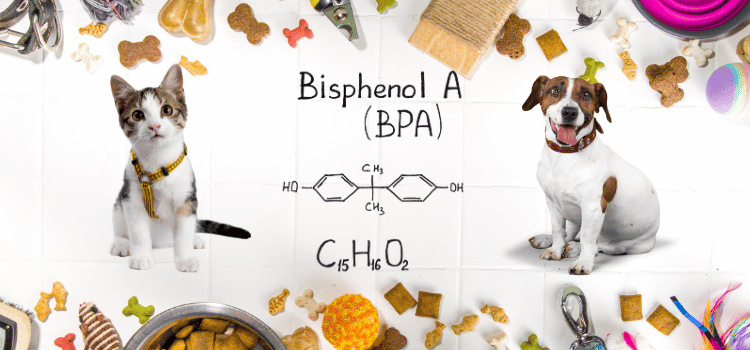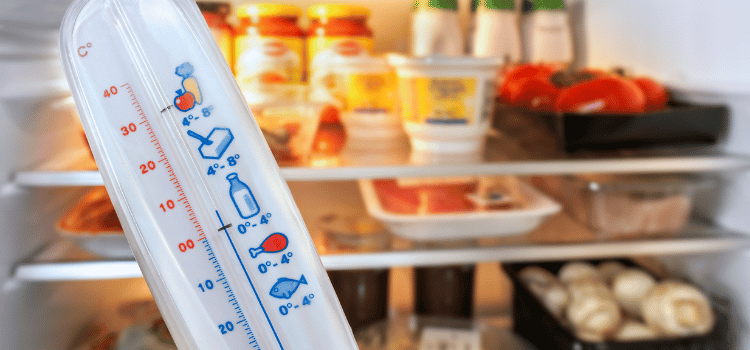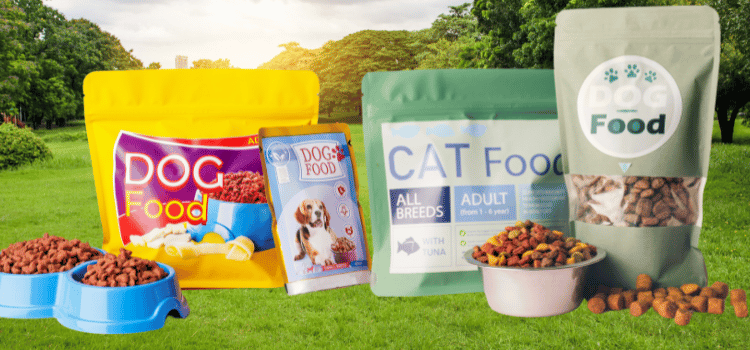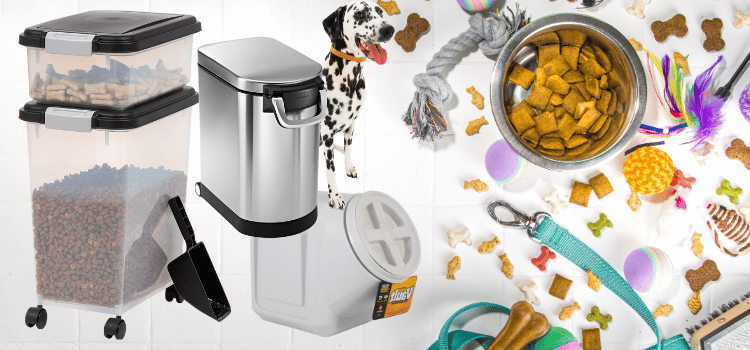
Proper storage of pet food is essential to ensure your pets receive the best nutrition, maintain food freshness, and avoid contamination. In this blog, we’ll explore how to store pet food correctly and recommend some top storage containers along the way.
By following some simple guidelines and investing in the right storage solutions, you can keep your pet’s food safe and tasty.
How To Store Pet Food Correctly
Storing pet food correctly is crucial for several reasons.
Besides the obvious like ants or mites finding their way in, there are a few other reasons that may surprise you.
- Preserving Nutritional Value: Pet food contains essential nutrients that can degrade if not stored properly. Exposure to air, moisture, and light can lead to nutrient loss, affecting your pet’s health.
- Preventing Contamination: Proper storage helps prevent contamination by pests, bacteria, and mold, which can cause serious health issues for your pets.
- Maintaining Freshness: Keeping pet food fresh ensures that it remains palatable for your pets, encouraging them to eat their meals and get the nutrition they need.
- Avoiding Waste: Proper storage reduces the risk of food spoilage, helping you avoid unnecessary waste and save money.
How To Store Pet Food Best Practices
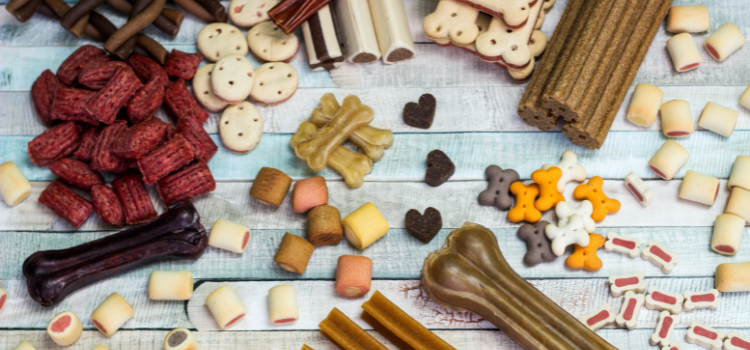
Proper storage of pet food is crucial to ensure that your furry friends receive the best nutrition, maintain their health, and enjoy fresh and safe meals every day.
Here’s a detailed look at the best practices for storing pet food correctly:
- Store in a Cool, Dry Place: Heat and humidity can accelerate the degradation of pet food. Choose a cool, dry place, away from direct sunlight, to store your pet food. A pantry, cupboard, or basement storage area can be ideal.
- Use Airtight Containers: Keeping pet food in its original bag is not enough. Transfer the food to airtight containers to prevent exposure to air and moisture. Airtight containers also help keep pests and contaminants out.
- Keep Original Packaging: If possible, place the entire bag of pet food inside an airtight container. The original packaging often contains important information like the expiration date and lot number, which can be useful if there are any recalls or issues.
- Label Containers: Always label your storage containers with the type of food and the expiration date. This practice helps you keep track of freshness and ensures you use the oldest food first.
- Avoid Overbuying: While bulk buying can be economical, purchasing too much food at once can lead to spoilage. Buy quantities that your pet can consume within a reasonable timeframe, usually within a month.
Recommended Pet Food Storage Containers
In addition to learning how to store pet food correctly, here are some highly recommended storage containers that ensure safe keeping of your pets food and nutrition.
1. Gamma2 Vittles Vault Airtight Stackable Pet Food Container
Key Features:
- Airtight Seal: The Gamma2 Vittles Vault features a robust airtight seal that keeps food fresh and free from pests and contaminants.
- Durable Construction: Made from high-density polyethylene, this container is durable and BPA-free.
- Stackable Design: Its stackable design saves space and allows for efficient organization.
- Easy Access: The twist-off lid provides easy access to the food while maintaining a secure seal.
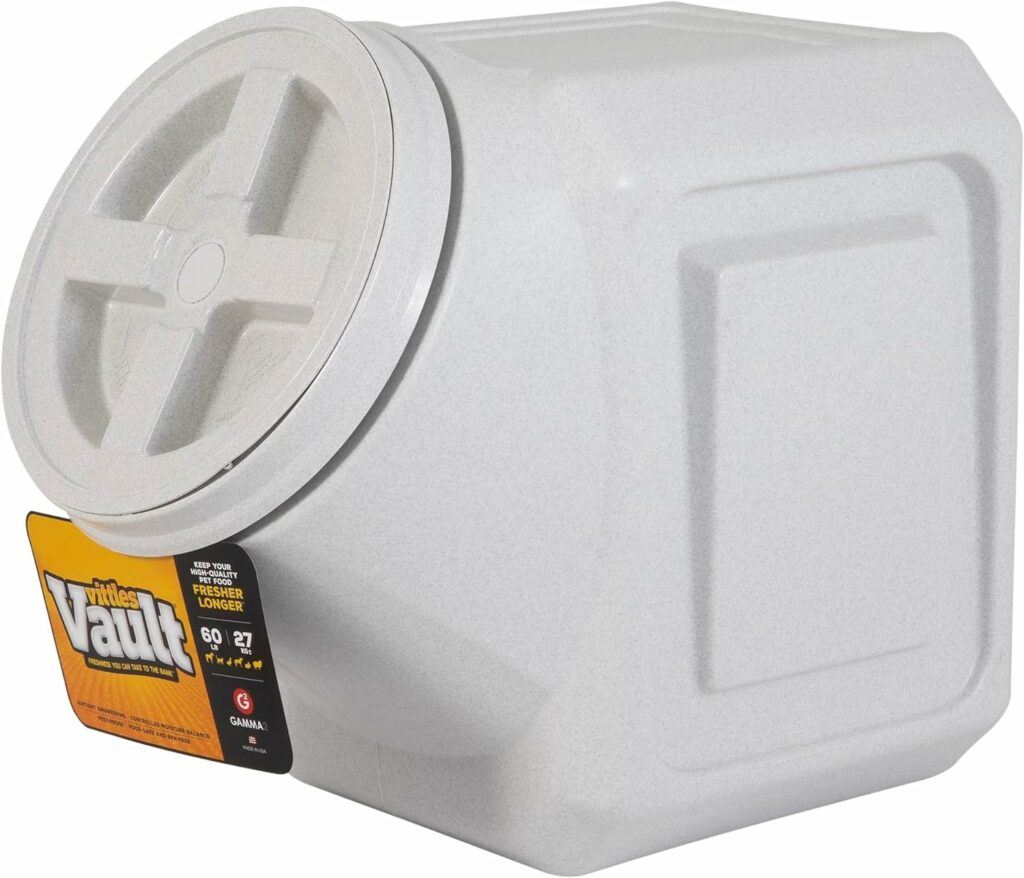
2. IRIS Airtight Pet Food Storage Container
Key Features:
- Airtight Lid: The IRIS container has an airtight lid with a snap lock latch to keep out moisture and pests.
- Translucent Body: The translucent body allows you to see how much food is left without opening the container.
- Rolling Design: It comes with wheels, making it easy to move around, especially if you have large bags of pet food.
- Variety of Sizes: Available in various sizes to accommodate different quantities of pet food.
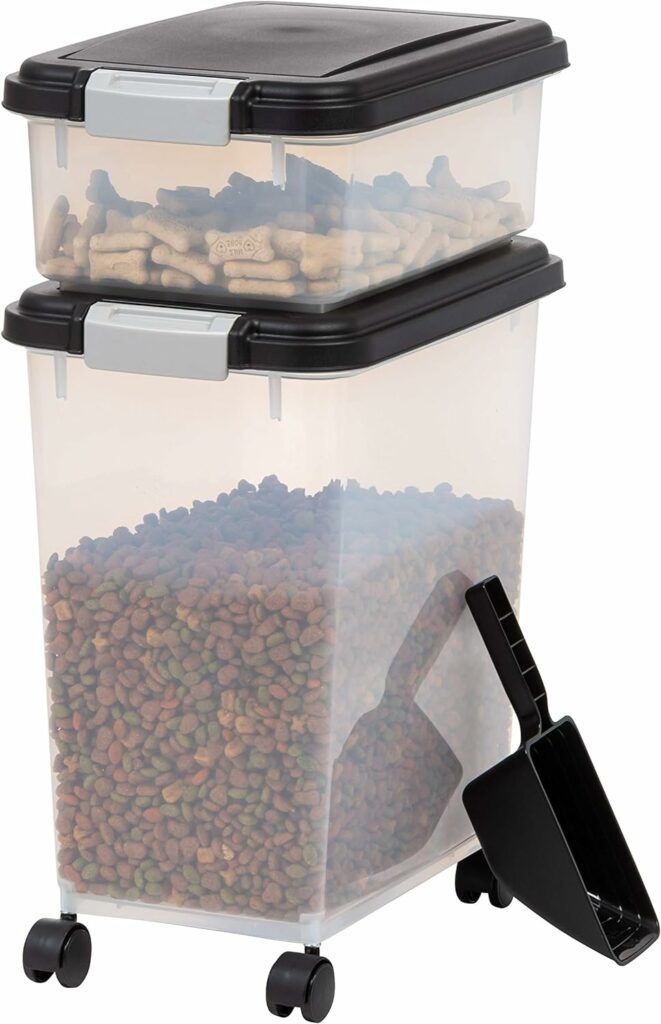
3. Simplehuman Pet Food Storage Can
Key Features:
- Airtight Seal: The Simplehuman storage can features an airtight seal that locks in freshness.
- Built-in Scoop: It includes a magnetic scoop that attaches under the lid for easy access.
- BPA-Free: Made from BPA-free materials, ensuring safe storage of your pet’s food.
- Ergonomic Design: The container has a handle and wheels for easy maneuverability and dispensing.
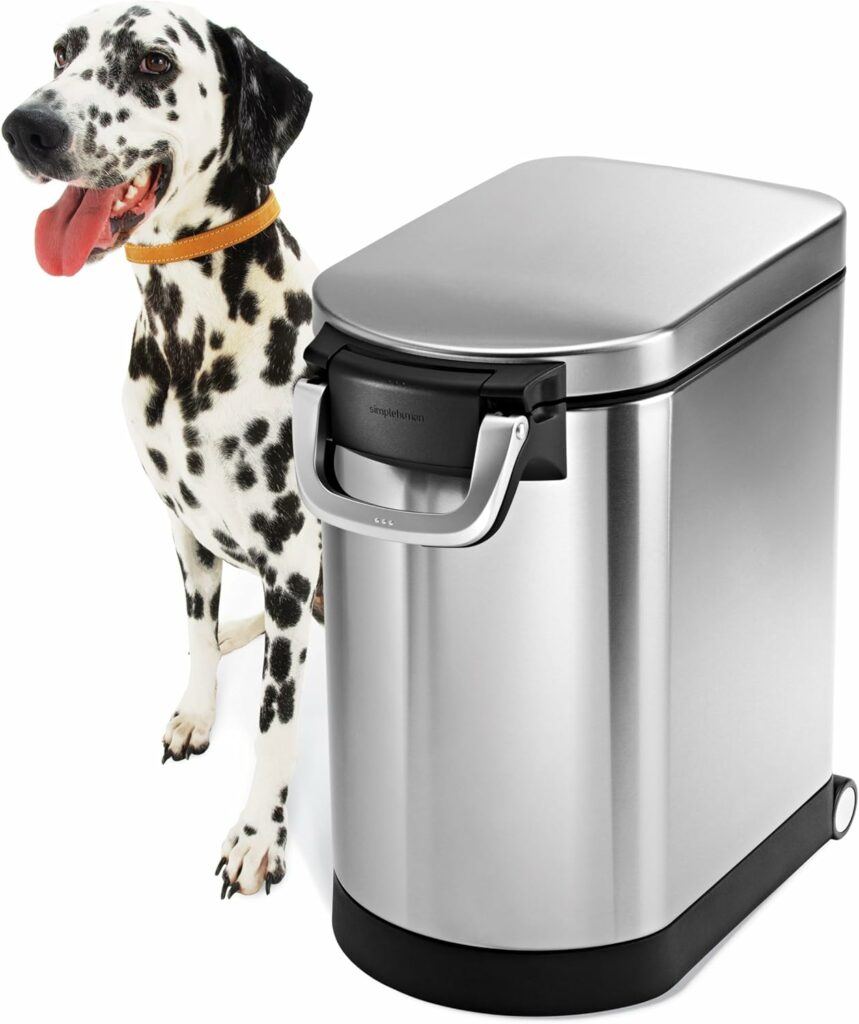
Tips for Maintaining Pet Food Freshness
In addition to using the right storage containers, here are some extra tips on how to store pet food, to keep your pet food fresher, healthier, and tastier for your pets.
- Check Expiration Dates: Always check the expiration dates on pet food packaging and ensure you use the oldest food first.
- Avoid Mixing Old and New Food: When replenishing your pet food container, avoid mixing old food with new food. This practice helps maintain freshness and prevents contamination.
- Clean Containers Regularly: Clean storage containers thoroughly before refilling them with new food. This step helps eliminate any residual oils or crumbs that could spoil the new food.
- Store Canned Food Properly: Once opened, canned pet food should be covered and stored in the refrigerator. Use within the recommended timeframe, usually within a few days, to ensure it remains fresh and safe for your pet.
Summary
Storing pet food correctly is essential for maintaining its nutritional value, preventing contamination, and keeping it fresh.
By following best practices and using high-quality storage containers like the Gamma2 Vittles Vault or our other recommended storage containers, you can ensure your pet’s food stays safe and delicious.
Proper storage not only benefits your pet’s health but also helps you avoid waste and save money. Implement these tips and recommendations to provide the best care for your furry friends.

